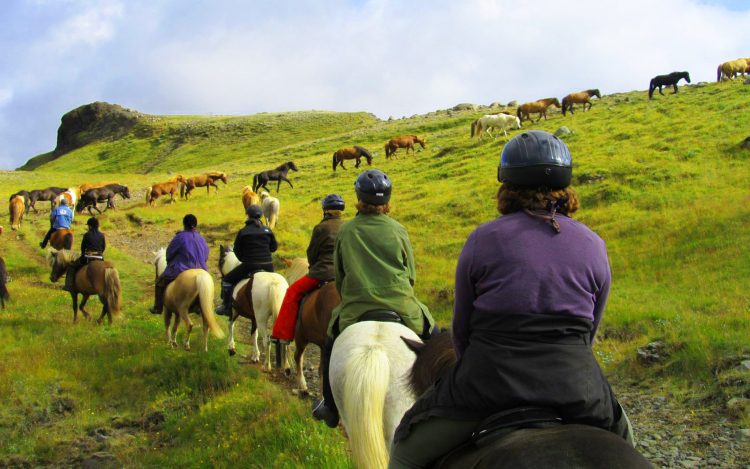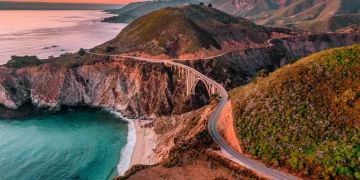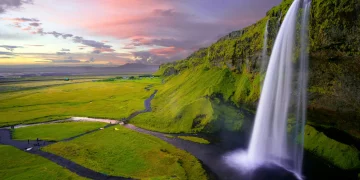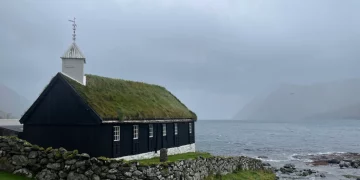Agriculture, with its pastoral symphony of livestock and poultry, has long been the cornerstone of our sustenance. Yet, the traditional focus on breeding and rearing is no longer sufficient to meet market demands or support the industry’s growth. It is through the deep development of peripheral products, related projects, and even the cultivation of farm enthusiasts that agriculture, traditionally a primary industry, evolves into the tertiary sector, bringing with it a plethora of opportunities for the livestock sector.
Equestrian Time Travel in Iceland’s Viking Landscape
While Iceland’s winter skies dance with auroras, I argue that the Icelandic summer possesses an allure all its own. Beneath the sun, waterfalls sketch dual rainbows amidst the mist, resilient flowers bloom on Martian terrains, and moss-covered stones whisper of ancient myths. Mountains, once slumbering under the sea, now stand as flat-topped sentinels, with rainbows poised to arch across their peaks at a moment’s notice. Before them, meadows sprawl, dotted with countless sheep that graze contentedly before succumbing to slumber’s embrace.
For those seeking to immerse themselves in Iceland’s natural splendor, self-driving is the preferred mode of travel. Yet, not far from the cities, there lies an alternative deep dive into the landscape—horseback riding. With an abundance of equestrian programs, ranging from hill ascents to beach gallops and free-reining across vast lava fields, the ubiquity of horse farms is no coincidence. Over a millennium ago, the Vikings brought the Icelandic horse to the island. Due to geographic isolation, these horses have preserved ancient genes, making them one of the world’s oldest breeds. Stringent protection of the Icelandic horse’s lineage has been in place since 982 AD, with laws enacted by the Icelandic parliament, and it is said that once an Icelandic horse leaves the island, it cannot return.
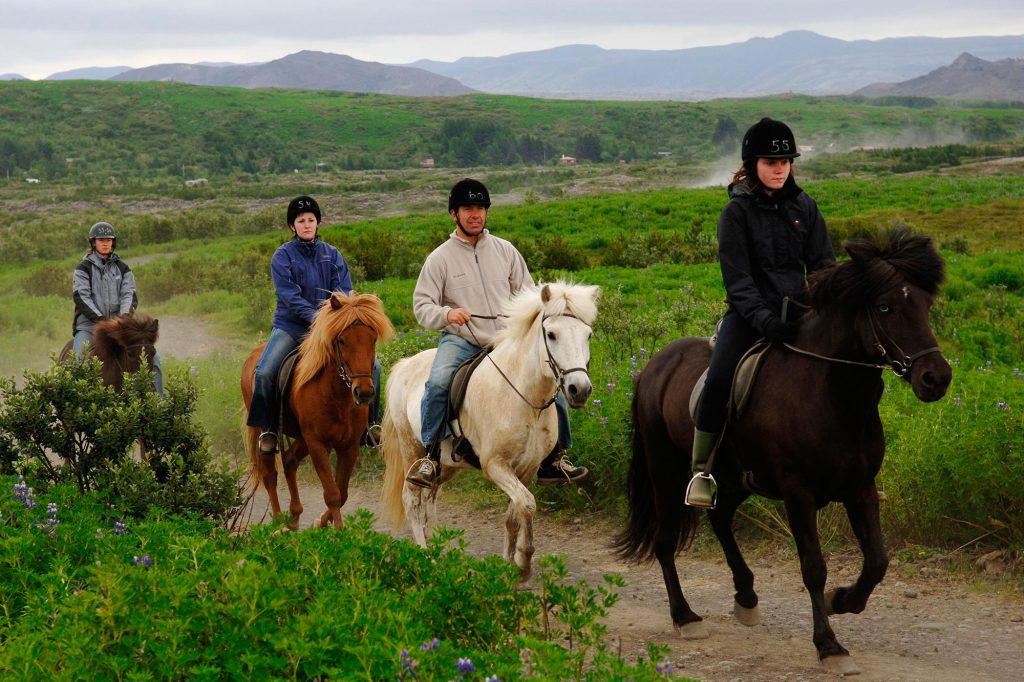
The well-being of Icelandic horses is evident. Farms, though fenced, boast vast expanses where horses roam sparsely. Their affectionate nature towards humans is a reflection of the love they receive. When I stopped to admire the scenery, a sturdy pony would trot over from a distance to greet me. With their long manes, reminiscent of a rockstar’s hairdo, they exhibit a remarkable tolerance for affection. One might even encounter horses with charmingly braided manes—a stylistic touch, no doubt.
The riding program I joined was less than an hour’s drive from Reykjavik. The farm’s stables were grand and spacious, with thick walls likely designed to withstand Iceland’s fierce storms and frigid winters. Icelandic horses are known for their docile nature and compact size, making them a safe choice for beginners. With groups limited to twenty, accompanied by three guides leading, trailing, and mingling in-between, the experience was both safe and visually delightful. Interestingly, the guides hailed from various corners of the world, including a French girl working a summer job, drawn by her passion for horses.
Departing from the stable, our cavalcade traversed a vast lava plain, a region once stripped of vegetation by volcanic activity. Amidst the rocks, moss and thorns clung to life, with the occasional bloom of lupins adding splashes of color. The well-trained Icelandic horses followed one after another, requiring no advanced riding skills from their riders. The guides reminded us to sit up straight and hold the reins tight to prevent the horses from snacking on the roadside flora.
For safety, cameras and phones were prohibited during the two-and-a-half-hour ride, but we were allowed to capture memories during two scheduled stops. The farm provided all necessary equipment, including helmets and gloves. With Iceland’s weather prone to sudden changes, dressing warmly and donning rain gear was essential. The only requirement for participants was to engage fully—observing the lava terrain and wildflowers, listening to the streams’ melodies, gazing at glaciers and waterfalls, feeling the rain on their faces, and then basking in the warmth of the sun. The undulating motion of the horse offered a perspective of Iceland that perhaps most closely resembled that of the Viking era.
The Miraculous Turnaround of a Pig Farm
In Iga, Mie Prefecture, a town known for its ninja heritage, lies MOKUMOKU—a hands-on farm experience that stands as a classic example of agritourism’s success. This pig farm’s transformation into a tourist attraction serves as a model for other farms seeking to diversify through visitor engagement.
The farm’s homepage bursts with activities, from summery shaved ice festivals and beer gardens to autumn harvest celebrations and educational animal-themed events. Even Christmas reservations are highlighted in a kaleidoscope of announcements, featuring adorable calves and piglets alongside the vibrant smiles of staff members. The website alone is enough to spur a visit, contributing to the farm’s annual draw of half a million visitors.
Originally established in 1987 as a workshop to support local farmers in breeding Iga pigs and producing meat products, the farm sought to improve the local economy. Despite producing delicious hams and sausages, the remote mountain location and a small population of 8,000 meant few customers and challenging sales, leading to significant debt.
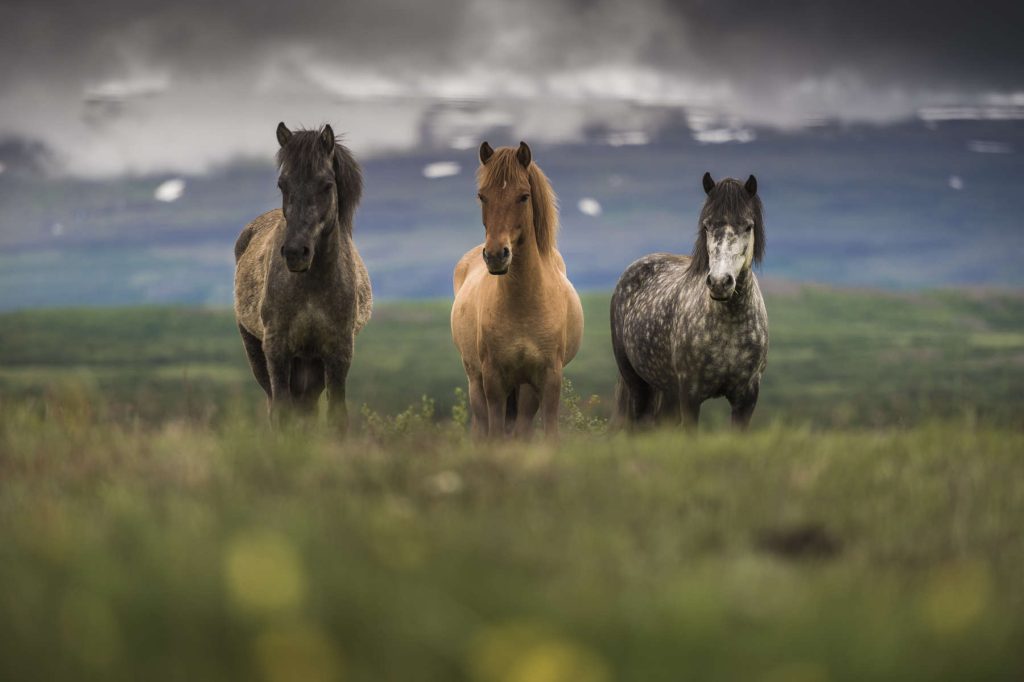
A fortuitous phone call inquiring about hands-on sausage-making classes sparked a new direction for the workshop. To enhance their craft, the president became an apprentice in Germany in 1991, with staff members continuing the tradition annually. By 1995, the workshop transformed into MOKUMOKU Handcraft Experience Farm, achieving the sought-after “local production for local consumption.”
The farm is more than an agricultural outpost; it’s a pioneer in the field. Their homemade bread and craft beer have won accolades, and their vegetables boast a proprietary brand. As a farm founded on swine, pigs are the stars. The establishment of the Japan Pet Mini Pig Association and the world record-breaking mini pig “Kotetsu” are testaments to their success. The core products, various sausages and hams, have garnered countless domestic and international awards. From the farm’s ambiance and details to its activities and culinary offerings, pig elements are omnipresent, enhancing the farm’s uniqueness and appeal.
Beyond typical experiences, the farm has leveraged local hot springs to create a resort area, extending visitors’ stays and enriching their experiences. Today, the farm juggles pig rearing and vegetable farming with a membership-based mail-order business, securing a loyal fan base. While mail order may seem a stretch from traditional agriculture, the integration of processing and sales into agriculture provides a sustainable environment for young people to earn a living through farming. The new president’s vision of creating a “romantic and dreamy 21st-century agriculture” resonates with a sense of enchantment.
Approaching Heidi’s Alpine Meadows
“Heidi,” a novel completed in 1880 by Swiss author Johanna Spyri, remains unforgotten over the decades. The protagonist, with her kindness and cheerfulness, transformed those around her. The story has been adapted for the screen multiple times, with Shirley Temple’s “Heidi” and the anime “Alps no Shojo Heidi” by Isao Takahata and Hayao Miyazaki being the most renowned.
If Heidi is the first protagonist, then the idyllic village in the book is a close second. On the border of Switzerland and Liechtenstein lies the town of Maienfeld, an hour by train from Zurich. This town and its surroundings are the real-life inspirations for Heidi and her grandfather’s village. Nestled at the foot of the Alps and surrounded by vast vineyards, Maienfeld is picturesque and serene. As the setting for “Heidi,” it draws countless visitors from around the globe.
A leisurely hour’s walk from Maienfeld leads to Heidi’s village, set against the majestic Alps and replicating the life of a 19th-century Alpine hamlet. En route, tranquil pastures and vineyards abound, essential elements in crafting the world of Heidi. Cows and sheep graze on green slopes, wooden carts rest beside farmhouses, and poultry roam—the very scenes depicted in “Heidi.”
Heidi’s house is furnished with artifacts from the late 19th century, used in Alpine villages. The entryway showcases sleds, snowshoes, and wooden skis, with firewood stacked behind the house. Small windows and steep roofs protect against the cold, while the rustic living room features simple wooden furniture and basic tableware. Iron pots hang above the hearth, and oil lamps evoke the warmth and light of winter. These items tell a story of people living in harmony with nature’s challenges.
Continuing along the mountain path from Heidi’s house, a two-hour walk leads to the grandfather’s summer hut, where Heidi spent her summers. The hay bed, a memorable feature in Heidi’s life, appears less soft and more prickly in reality. Perhaps it’s the novel’s depiction of summer bliss that paints the hay bed as fragrant and inviting.
Maienfeld and its surroundings offer an exceptional travel destination, where visitors can enjoy unparalleled natural beauty and vibrant rural life. Mornings begin with the sound of roosters and cowbells, followed by a fresh breakfast of butter, cheese, and bread—handmade by local farmers. Tourists can participate in farming activities, harvest fresh fruits, and experience pastoral bliss. It’s a hiker’s paradise and a mountaineer’s haven.
In Maienfeld, one can indulge in classic Swiss cuisine like cheese fondue, where rich Swiss cheese meets white wine to create a delectable dip for bread, potatoes, and vegetables. Another traditional dish, “Swiss Raclette,” involves pouring melted cheese over hot potatoes, offering a heartwarming and satisfying meal.
Heidi’s homeland is more than a literary fantasy; it is a paradise in reality. It reminds us that true happiness lies in harmonious coexistence with nature and in a life that’s simple and genuine. Here, everyone can find their peace and be touched by the limitless charm nature bestows.


